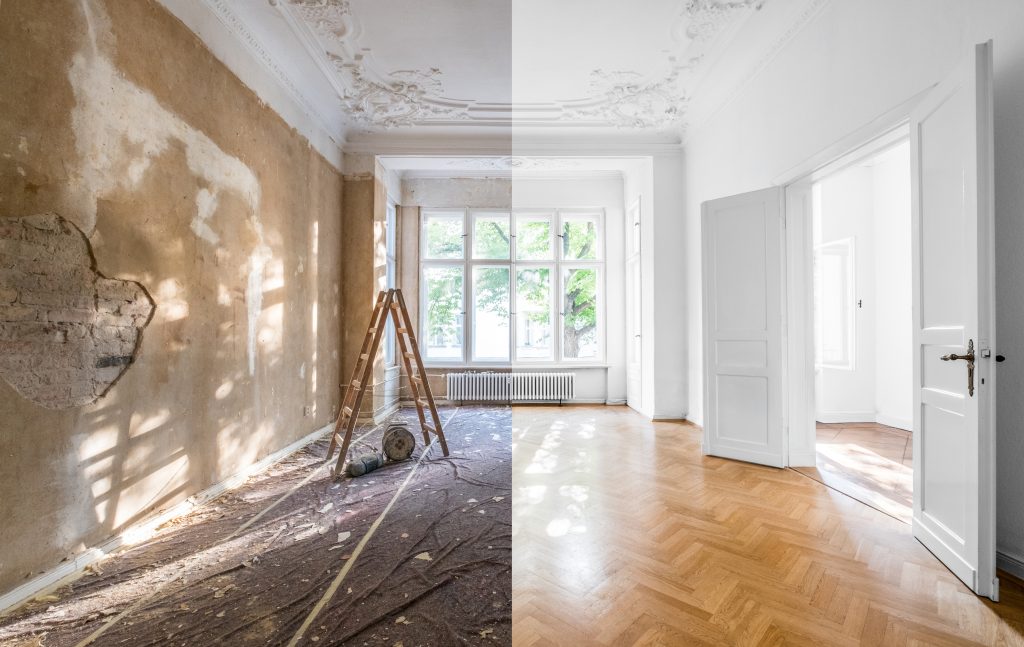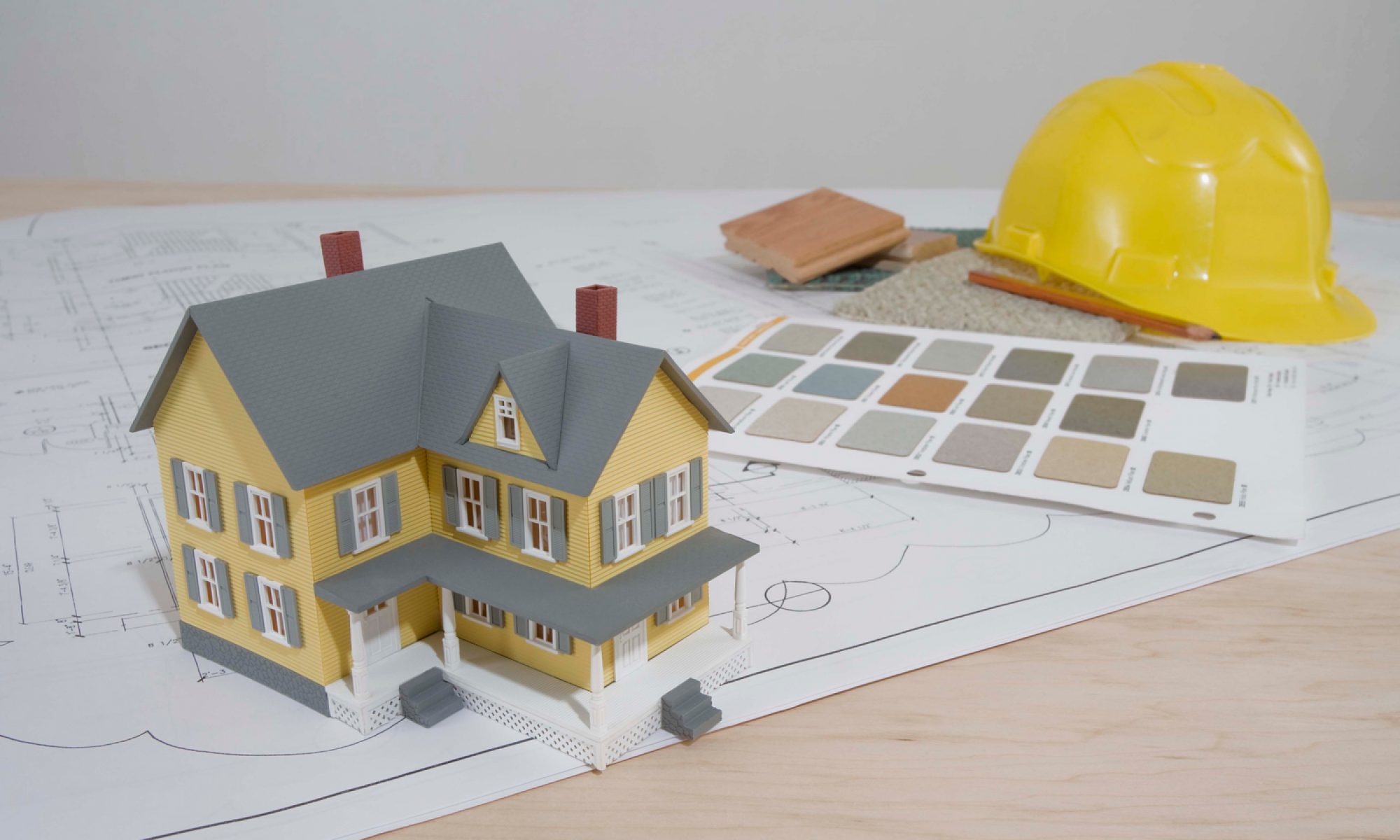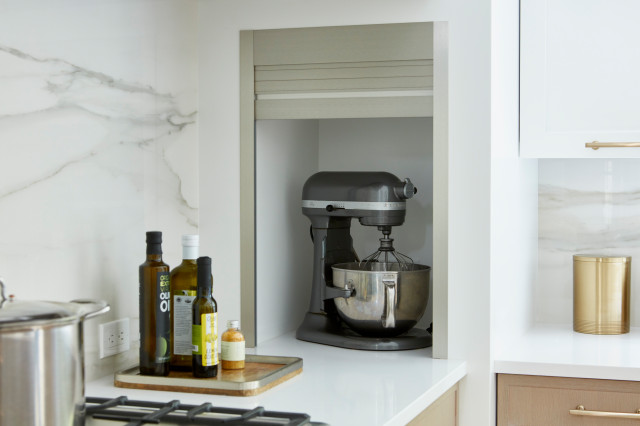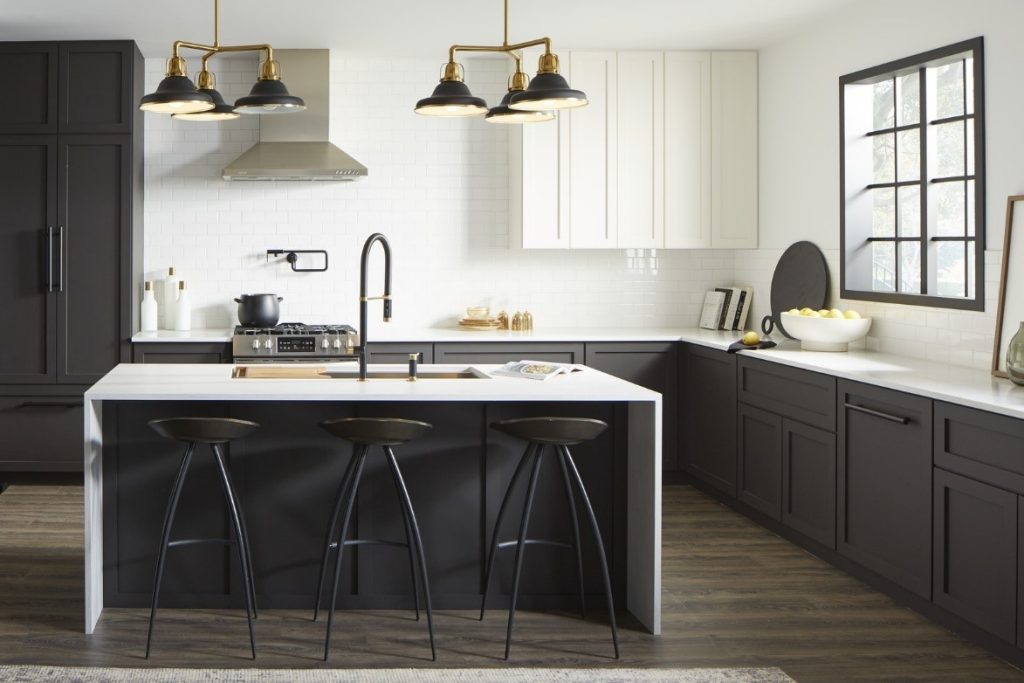The Good Housekeeping Institute, established in 1900, emphasizes the importance of flooring and has extensively tested a variety of materials. These range from traditional wood and stone to modern alternatives like vinyl and engineered wood, as well as more recent trends such as concrete and wood-look porcelain. We share their findings in this blog article, providing an overview of the primary options including their advantages, drawbacks, and approximate costs. It is recommended to invest more in areas of your home that experience high traffic and visibility, while opting for more cost-effective, durable materials in other spaces—a strategy that has stood the test of time.
Hardwood flooring comes in two primary types: solid wood, which is made from a single piece of wood, and engineered wood, which consists of a real wood veneer atop structural plywood. Popular choices include oak, ash, maple, and walnut, available in up to fifty species.
- Pros: Hardwood floors offer timeless warmth and beauty and can be sanded and refinished multiple times, allowing solid wood floors to last for decades or even centuries.
- Cons: The primary drawback is the cost, with hardwood generally being more expensive, though prices vary by species. It’s also prone to dents, scratches, and in the case of solid wood, damage from humidity changes, such as cracks and squeaks. Engineered wood is more resistant to moisture, making it a better choice for areas like kitchens and basements.
- Costs: Installation costs for solid wood flooring range from $5 to $10 per square foot, while engineered wood flooring costs between $4 to $9 per square foot.
Laminate flooring is an engineered option that uses a photographic layer of wood (or stone) under a protective plastic coating, supported by a dense fiberboard substrate.
- Pros: Laminate flooring is highly durable, resistant to scratches and dents, and is one of the most affordable flooring types. It often features a DIY-friendly “floating” floor system where planks snap together without needing nails or glue.
- Cons: Laminate doesn’t convincingly mimic real wood or stone due to its plastic feel and repetitive patterns. It cannot be refinished, limiting its lifespan compared to other flooring types. Additionally, the use of formaldehyde and other chemicals in its production raises health and environmental concerns.
- Cost: Installation costs range from $3 to $7 per square foot.
Vinyl flooring also known as resilient flooring, is the fastest-growing flooring category. It ranges from budget-friendly, DIY peel-and-stick tiles to luxury vinyl tile (LVT), which features multiple layers including a high-definition printed design, a durable top layer, and several cushion layers.
- Pros: Vinyl flooring is very affordable at the entry level. All vinyl types are stain, scratch, and dent-resistant, and waterproof, making them suitable for wet areas like basements and bathrooms. Installation is straightforward, especially for adhesive tiles and floating planks. LVT is robust and mimics the look and feel of real wood so closely that experts often struggle to tell the difference.
- Cons: Despite improvements in appearance, vinyl, including LVT, won’t satisfy purists as it can’t perfectly replicate real wood or stone. It also can’t be refinished; once worn, it must be replaced. Surprisingly, LVT can be as costly as real wood.
- Cost: Prices range from $2 to $6 per square foot, installed.
Carpet remains the largest flooring category in the U.S., despite losing some market share to resilient flooring. Most U.S.-sold carpet is tufted, typically featuring nylon fibers through a polyurethane backing. In contrast, woven carpet, more prevalent in Europe, is made from lengths of yarn, often wool, and is considerably more expensive than tufted types.
- Pros: Carpet is the most comfortable and cost-effective flooring option, available in a vast array of colors and patterns. It’s easy to install and maintain, with regular vacuuming usually sufficient. Stain-resistant carpets are particularly low-maintenance.
- Cons: The main drawback of carpet is its tendency to trap dirt and dust, which can aggravate allergies. Woven carpets are less prone to this issue due to their construction, which leaves fewer places for dirt to accumulate. Additionally, wool carpets are anti-static, reducing dust attraction compared to nylon tufted carpets.
- Cost: Prices range from $3 to $10 per square foot, installed.
Stone flooring, like wood, is a classic flooring material that often increases home value. There are three main types of stone used in flooring: sedimentary stones like travertine and limestone, formed from mineral layers and marine organisms; igneous stones like granite, created through extreme heat and volcanic activity; and metamorphic stones like marble and slate, which transform under intense heat and pressure.
- Pros: Stone flooring offers unique character due to the natural variation in each piece, making each installation one-of-a-kind. It’s durable, capable of withstanding heavy traffic and sunlight without fading, and doesn’t harbor dust or allergens.
- Cons: Stone flooring is expensive and typically requires professional installation. It’s hard underfoot, which means dropped items like dishes will likely break. Additionally, many stone floors need to be sealed to prevent stains.
- Cost: Installation costs range from $3 to $7 per square foot.
Concrete flooring: High-end builders and designers have adopted concrete not just for its utilitarian qualities but as a fashion-forward material for flooring and kitchen countertops. Concrete floors can be the typical institutional gray or be transformed with dyes and surface treatments like acid stains or rubber-stamp stencils, offering a unique aesthetic.
- Pros: Concrete floors are highly durable and easy to maintain, especially when properly sealed during installation. They conduct heat efficiently, making them suitable for systems with radiant heating, where hot water tubes are embedded beneath the floor.
- Cons: Due to its customization, concrete flooring is expensive and requires professional installation. The material is extremely hard, which can be unforgiving on dropped items, and it requires resealing approximately every year to avoid stains.
- Cost: Installation costs range from $3 to $8 per square foot.
Tile flooring comes in two primary types: ceramic and porcelain. Ceramic tiles are made from a blend of water and sand, making them softer and more affordable. Porcelain tiles are crafted from finer, denser clay and fired at higher temperatures, making them harder and less porous.
- Pros: Tile flooring offers a timeless appearance and is available in numerous colors and designs, ranging from mosaics to large-format tiles with minimal grout lines. All tiles are waterproof and require low maintenance. Porcelain tiles are particularly durable, resistant to scratches and dents.
- Cons: The main challenge with tile flooring is its installation, which typically involves laying the tiles in mortar on a smooth, stable base. This process can be complex, usually requiring professional installation. Porcelain tiles are also comparatively expensive, costing about as much as solid wood flooring.
- Cost: Prices range from $4 to $15 per square foot, installed.
Cork flooring is a renewable material sourced from the bark of cork trees, prized by some for its unique qualities. However, it varies significantly in grade and characteristics, so be sure to purchase from a specialized flooring dealer to ensure optimal performance.
- Pros: Cork is lightweight and soft, making it one of the most comfortable flooring options. It’s water-resistant and remains non-slippery when wet, suitable for kitchens and bathrooms. Additionally, cork is non-toxic and environmentally friendly.
- Cons: Cork can fade when exposed to strong sunlight. Lower-quality cork can be easily damaged, showing signs of wear from heavy traffic, furniture, and pets.
- Cost: Installation costs range from $5 to $14 per square foot.
Linileom flooring, an all-natural flooring made from linseed oil and wood products, offers a sustainable and unique alternative to vinyl, though it’s less common. It’s typically chosen by more discerning customers for use in kitchens, bathrooms, or new home gyms.
- Pros: Its sustainable qualities make linoleum highly appealing, along with its retro charm and a broader range of styles and colors available in recent versions. Linoleum is comfortable underfoot due to its softness and is resistant to fading from sunlight.
- Cons: Linoleum is not as robust as vinyl, wearing down under heavy foot traffic and susceptible to scratches and dents. While a wax finish can protect the surface, it requires additional maintenance.
- Cost: Prices range from $3 to $7 per square foot, installed.
How to Choose the Best Flooring
The Good Housekeeping Institute experts are always paying attention to the marketplace to identify the flooring materials you’re most likely to find at home centers, independent showrooms, and online. They regularly attend trade shows and industry events to keep up with the latest trends and innovations. When it comes to hands-on testing, they focus on brands with a proven track record of performance and reliability. They conduct stain tests in their labs to determine how well materials resist substances like mustard and wine. They also perform abrasion tests to ensure materials can withstand scratches and conduct drop tests to measure their resistance to dings and dents. Their engineers review technical data from manufacturers related to performance, safety, and sustainability. Additionally, they use the flooring materials for actual installations in consumer testers’ homes to see how they perform under real-world conditions.
What Flooring is Best for You?
Flooring uniquely combines aesthetic and practical functions in a home. Not only is it a significant design element, akin to paint colors and furniture, but it is also something you walk on every day. Redoing floors can be a major investment, comparable to buying a new car or kitchen appliances, so be sure to take the necessary time to invest in the best option for you.
Need help deciding what flooring option is best for you, your budget, and your living environment? Contact JFC Remodeling for expert advice and polished, detailed flooring work.
JFC Remodeling is committed to providing top-quality home reconstruction services to clients throughout Livingston County. With over 30 years of experience in the industry, our licensed contractors create unique, individualized, and polished renovations. Whether the site requires improvement, repair, or is a new construction, you can trust our experts to deliver remarkable results. Call or email us to learn more.
Written by the digital marketing team at Creative Programs & Systems: www.cpsmi.com





